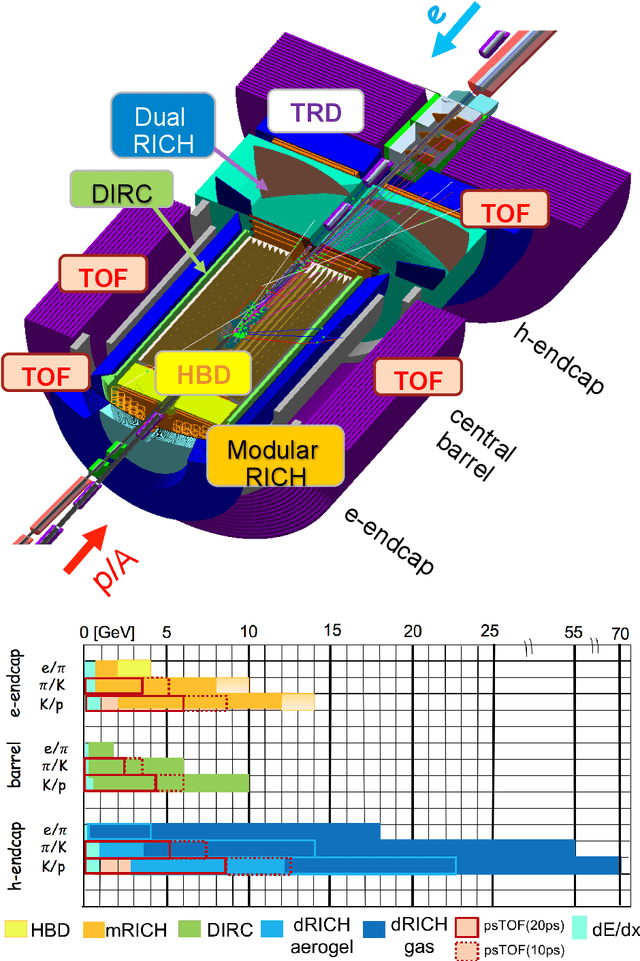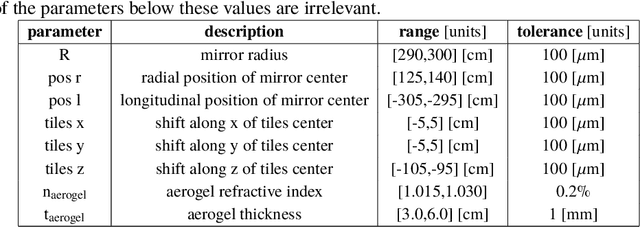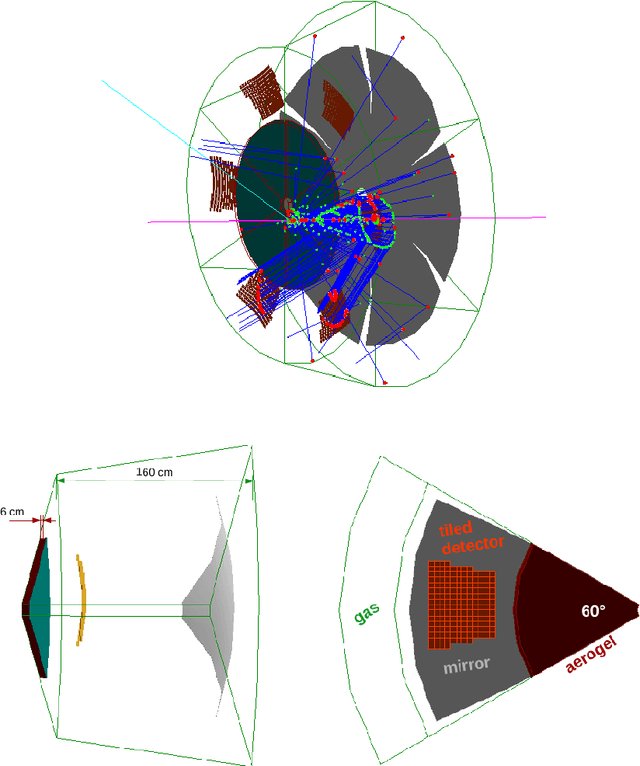M. Diefenthaler
AID
AI-Assisted Detector Design for the EIC E)
May 28, 2024Abstract:Artificial Intelligence is poised to transform the design of complex, large-scale detectors like the ePIC at the future Electron Ion Collider. Featuring a central detector with additional detecting systems in the far forward and far backward regions, the ePIC experiment incorporates numerous design parameters and objectives, including performance, physics reach, and cost, constrained by mechanical and geometric limits. This project aims to develop a scalable, distributed AI-assisted detector design for the EIC (AID(2)E), employing state-of-the-art multiobjective optimization to tackle complex designs. Supported by the ePIC software stack and using Geant4 simulations, our approach benefits from transparent parameterization and advanced AI features. The workflow leverages the PanDA and iDDS systems, used in major experiments such as ATLAS at CERN LHC, the Rubin Observatory, and sPHENIX at RHIC, to manage the compute intensive demands of ePIC detector simulations. Tailored enhancements to the PanDA system focus on usability, scalability, automation, and monitoring. Ultimately, this project aims to establish a robust design capability, apply a distributed AI-assisted workflow to the ePIC detector, and extend its applications to the design of the second detector (Detector-2) in the EIC, as well as to calibration and alignment tasks. Additionally, we are developing advanced data science tools to efficiently navigate the complex, multidimensional trade-offs identified through this optimization process.
Artificial Intelligence for the Electron Ion Collider (AI4EIC)
Jul 17, 2023Abstract:The Electron-Ion Collider (EIC), a state-of-the-art facility for studying the strong force, is expected to begin commissioning its first experiments in 2028. This is an opportune time for artificial intelligence (AI) to be included from the start at this facility and in all phases that lead up to the experiments. The second annual workshop organized by the AI4EIC working group, which recently took place, centered on exploring all current and prospective application areas of AI for the EIC. This workshop is not only beneficial for the EIC, but also provides valuable insights for the newly established ePIC collaboration at EIC. This paper summarizes the different activities and R&D projects covered across the sessions of the workshop and provides an overview of the goals, approaches and strategies regarding AI/ML in the EIC community, as well as cutting-edge techniques currently studied in other experiments.
AI-optimized detector design for the future Electron-Ion Collider: the dual-radiator RICH case
Nov 13, 2019



Abstract:Advanced detector R&D requires performing computationally intensive and detailed simulations as part of the detector-design optimization process. We propose a general approach to this process based on Bayesian optimization and machine learning that encodes detector requirements. As a case study, we focus on the design of the dual-radiator Ring Imaging Cherenkov (dRICH) detector under development as part of the particle-identification system at the future Electron-Ion Collider (EIC). The EIC is a US-led frontier accelerator project for nuclear physics, which has been proposed to further explore the structure and interactions of nuclear matter at the scale of sea quarks and gluons. We show that the detector design obtained with our automated and highly parallelized framework outperforms the baseline dRICH design. Our approach can be applied to any detector R&D, provided that realistic simulations are available.
 Add to Chrome
Add to Chrome Add to Firefox
Add to Firefox Add to Edge
Add to Edge